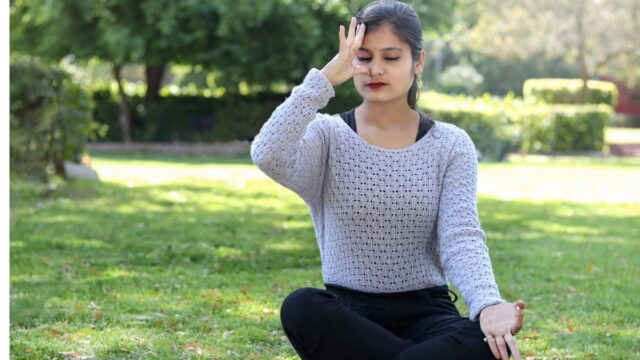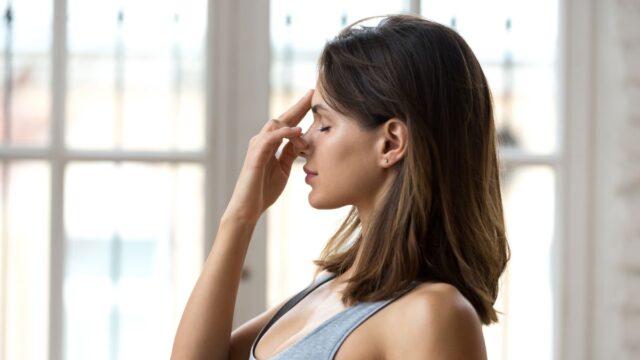Anxiety has become the internet’s favourite buzzword. With every instance that causes discomfort being labelled as anxiety, we must be careful to use the word appropriately and not conflate it with a serious medical condition.
We feel anxious at various points in our life. Some of us hate speaking in public, some struggle with new situations and some worry about the future. Feeling anxious about daily issues, and feeling relief as soon as the issue disappears is a normal, valid human reaction.
However, when these feelings become excessive, at the forefront of our minds and begin interfering with our daily activities, that is when we must be concerned. You might feel light-headed, restless, have a churning feeling in your stomach or become unable to concentrate. An anxiety disorder can manifest in various ways in our body.
Causes Of Anxiety
With our internet use being the way it is, oftentimes our mind is overstimulated and unable to relax. Anxiety is always exacerbated by other factors, forcing us to rethink and re-evaluate constantly within our minds.
Some other causes can be:
- Stress
- Trauma
- Childhood experiences
- Current living situation
- Physical or mental health issues
Of course, these are only some examples and there can be other underlying causes for anxiety as well. Each person’s body and mind react differently to various stressors and situations.
What is important, is that we learn to identify what causes our own anxiety and work towards managing it, so as to not lead to a full-blown anxiety disorder. To combat your anxiety disorder meditation and pranayama is highly recommended. Some people choose to do meditation for stress and anxiety, pranayama for anxiety and depression, or even entire lifestyle changes.
Below, we will discuss some best pranayama for anxiety.
Pranayama For Anxiety
Studies have shown that breathing exercises are some of the best ways to deal with anxiety. Pranayama, which is a yoga technique that focuses on controlled breathing, therefore, is a great way to learn how to manage your anxiety.
Pranayama for anxiety and depression is often recommended as it decreases stress, increases mindfulness, and calms and relaxes the body.
Here are some pranayama practices you can do for your anxiety.
1. Anulom Vilom

This is alternate nostril breathing, where you close one nostril for a certain count and breathe through the other, and then switch.
- Sit straight on your yoga mat or wherever you are comfortable.
- Take the thumb of your right hand and close your right nostril.
- Inhale with your left nostril, to a count you are comfortable with. We suggest you start with four counts first.
- Then, use your ring and pinkie finger to close your left nostril.
- Hold your breath briefly, and then exhale through the right nostril.
- Repeat for the opposite side.
When you are anxious, your heart rate increases. By controlling your breathing and exhaling longer than you inhale, you can reduce your heart rate.
2. Ujjayi Breath (Ocean Breath)
Also known as ‘ocean breath’, this form of pranayama is done by taking a deep breath and then creating a sound in the back of your throat while exhaling. It helps you calm your mind by focusing on your breathing.
1. Inhale and exhale through your nose slowly.
2. Keep your mouth closed through the process.
3. Constrict your throat and make a noise while exhaling.
3. Bhramari Pranayama (Bumblebee Breath)
This pranayama is done by exhaling with a technique that makes it sound like a buzzing bee. This practice has been shown to activate the parasympathetic nervous system, which tells the body that it can go into a rest period, thereby alleviating anxiety.
1. First, block your ears by placing your index fingers into them.
2. Then, inhale through the nose.
3. Keep your mouth closed and make a humming noise while you exhale.
4. Sama Vrtti Pranayama (Box Breathing)
Sama Vrtti Pranayama means ‘same breath’ and is also commonly known as box breathing. It is effective in calming the mind and body through conscious breathing.
1. While seated, inhale through your nose while counting till four slowly.
2. Hold the air in for two counts.
3. Exhale through your nose to the count of four.
4. Hold the air out at the exhale for two counts.
5. Repeat.
5. Dirga Swasam Pranayama (Complete Breath)
Dirga Swasam Pranayama, also known as three-part breath, helps boost the oxygen supply in your body, thereby reducing stress and anxiety. It focuses on three parts of the body – the abdomen, the diaphragm and the upper chest.
1. Start by bringing one hand to your lower belly and the other over your heart.
2. Breathe normally, and focus on your stomach, ribs and chest.
3. Start breathing slowly, and deepen your breath.
4. When you inhale, begin visualising the oxygen filling your abdomen, your lungs and then up to your collarbones.
5. When you exhale, visualise the oxygen leaving from the top to the bottom (collarbones to abdomen).
6. Repeat.
6. Kapalbhati Pranayama

Kapalbhati Pranayama is the practice of exhaling quickly with a contraction in the abdominal muscles. It focuses on clearing out old air and strengthening the lungs, as well as balancing the nervous system.
1. Sit in a comfortable position.
- Take a deep breath in through your nose.
- Exhale forcefully and quickly through the nose by constricting your abdomen.
- Repeat.
Try out these practices for about five minutes every day. Slowly, you will see the difference in your stress levels.
3 Other Things You Can Do To Manage Your Anxiety
1. Guided meditation for anxiety
To help with your anxiety disorder meditation is recommended. In guided meditation, we are led through it by an expert. Our minds have a tendency to wander and having someone lead us through processes of visualisation for successful meditation. Guided meditation for anxiety, and even meditation music for anxiety is a great way to declutter the mind and calm yourself fully.
2. Exercise
Being physically active is a great way to combat stress and reduce anxiety. Exercising also releases endorphins, which leaves you feeling satisfied after a good workout.
3. Keep a journal
Write your feelings down. Sometimes, keeping track of your personal life can help you identify your stressors and how you would need to deal with them.
In the end, only you can decide what works best for you. Be it pranayama for anxiety and depression, meditation for stress and anxiety, physical activities or simply confiding in others.
Your anxiety does not control your life, and whenever you need help, please reach out to someone you trust or a medical practitioner to get an opinion on how to manage it best.
Open up like never before and participate in conversations about beauty, entrepreneurship, mental health, menstrual & sexual health, and more. Desi women, join our community NOW!

